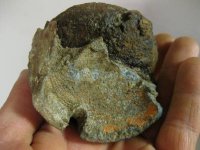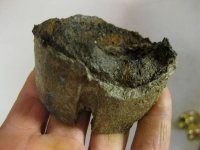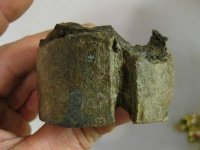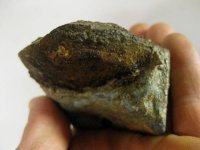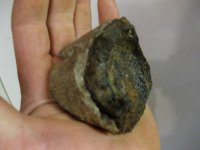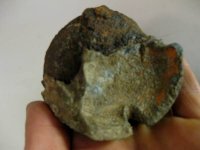I think Cannonball guy from the Treasure net forum cleared it up nicely. Here' what he says:
You've found the exploded base of a civil war Dyer 3"-caliber Common-Shell. By the way, the term "Common-Shell" does not mean plentiful, it means a "plain" or "ordinary" shell, which contained only an explosive charge ...it did not contain any antipersonnel slugs (which were called Case-Shot).
The orange color on your Dyer's sabot is original Ordnance Department color-code paint. The color-code enabled an artilleryman to very quickly identify each type of ammunition in the cannon's ammo-chest. Orange signified Common-Shell. Red meant Case-Shot. Black meant Solid-Shot.
The color-code paint rarely survives on projectiles which have been in the ground for about 150 years ...so your Dyer shell-base still showing some color-code paint is a very scarce find. Congratulations! Smiley
The sabot on your shell was made of a solder-like alloy, not lead. (That is why it doesn't have the smooth white patina typically seen on Minnie-balls, which were almost always made of pure lead.)
The presence of very deep "cast " (not cut or chiseled into the sabot by hand) flame grooves on your sabot means your shell is the second version of 3" Dyer, which made its first appearance in combat during Spring 1862.
Makes sense...Cool!


